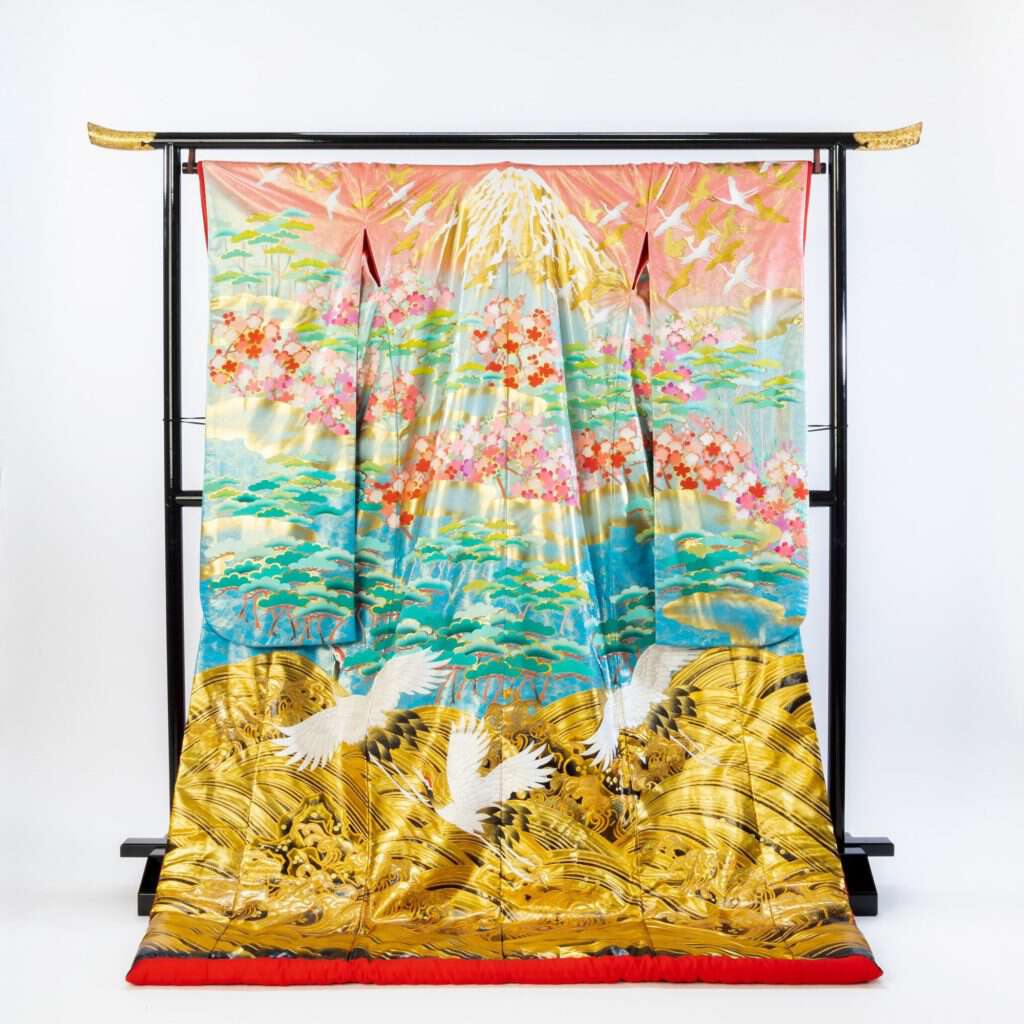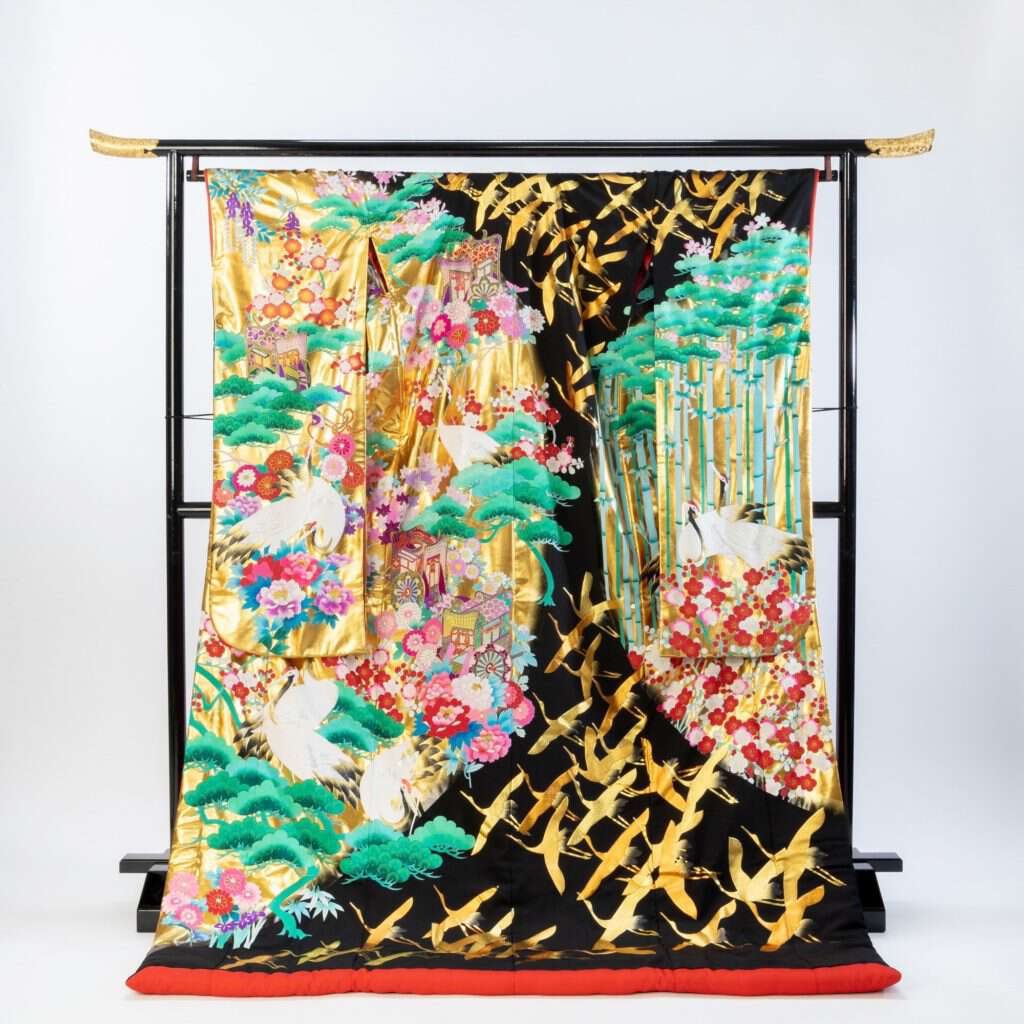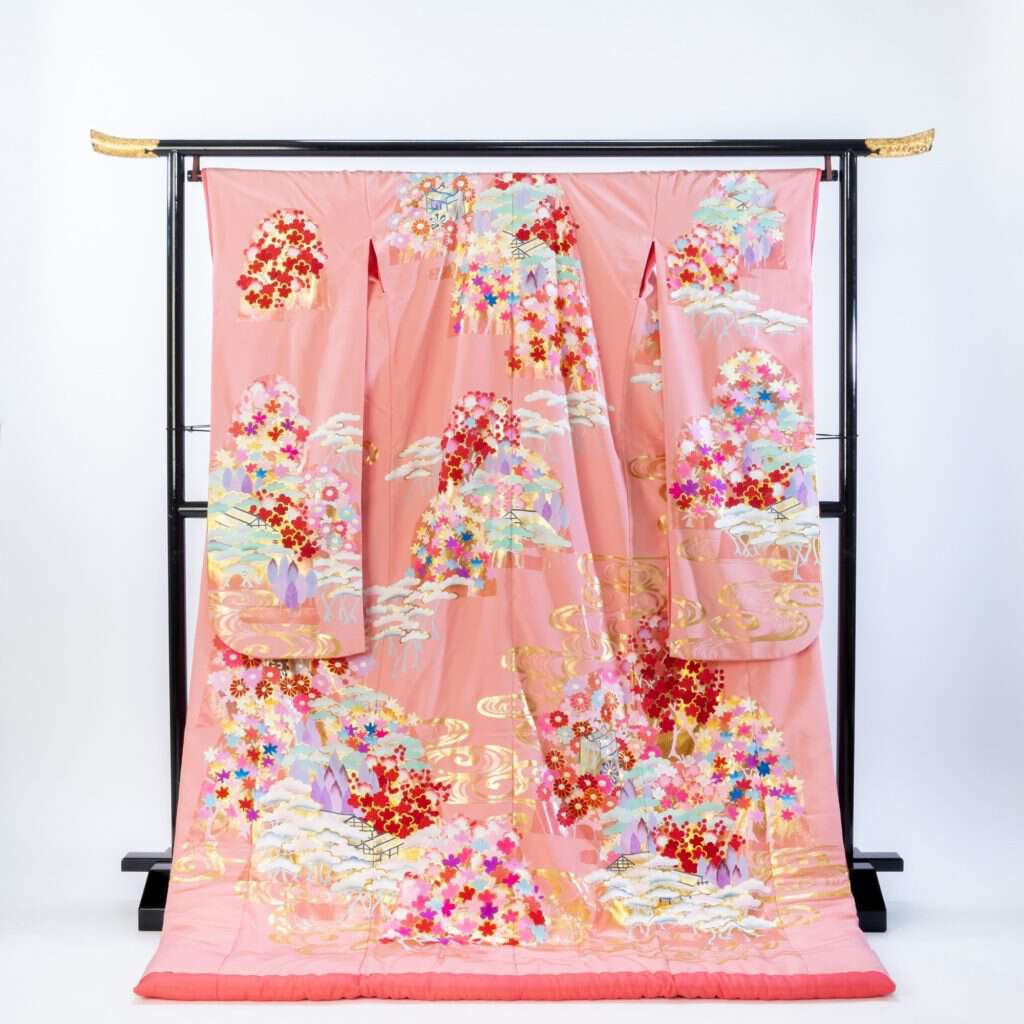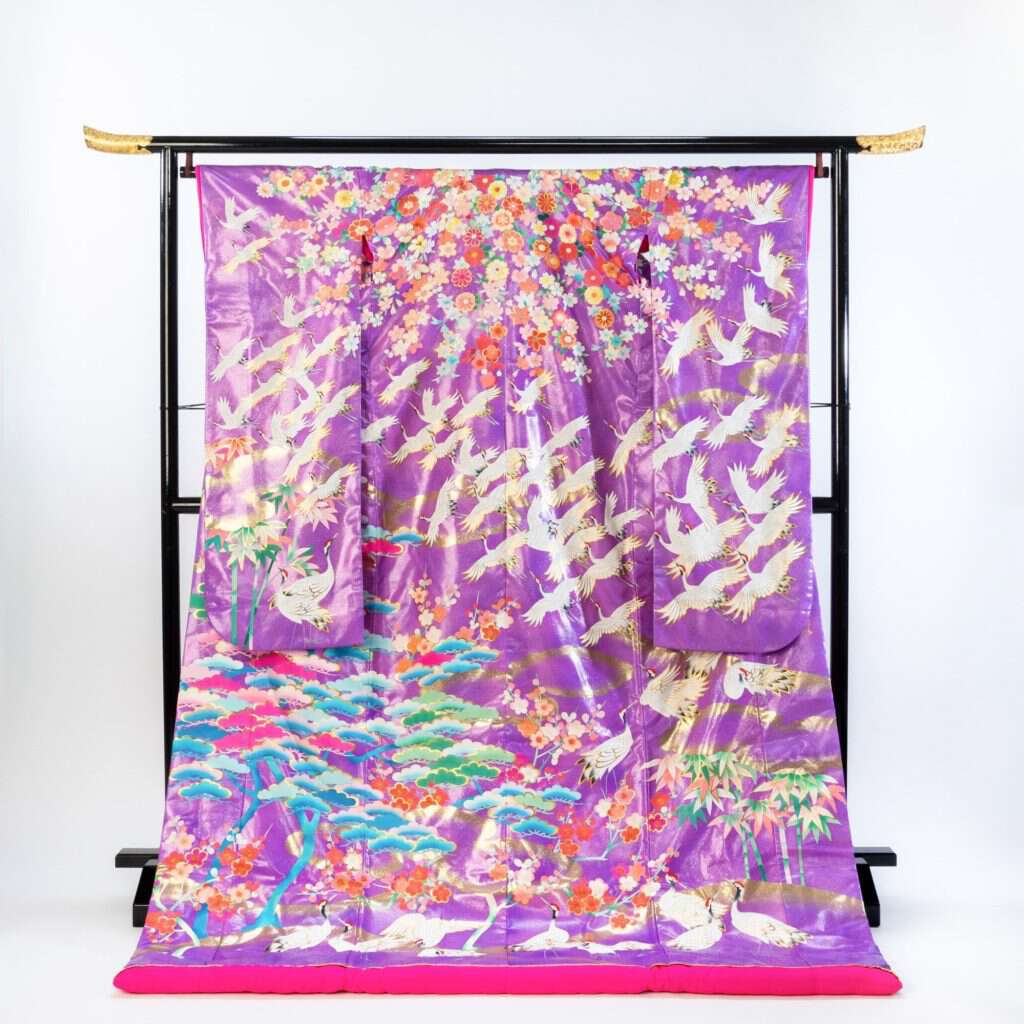... Prayer is at the core of the Japanese heart.

Shin Pou Ju Kai by Akira Akiyama
For decades before launching her own brand, Yuzen Marumasa, in 2010, Akira Akiyama was dedicated to designing high quality wedding kimonos. Nowadays, only a few brides have the opportunity to wear yuzen kimonos adorned with gold leaf or pearls.
In this interview, we talked to Ms. Akiyama about the spiritual meaning of traditional Japanese weddings, the hardships involved in making yuzen kimonos, and her pursuit of expressing beauty in a traditional form. (This interview has been translated and lightly edited for length and clarity)
Spirituality in Ritual

Hou Ki Den Jou by Akira Akiyama
The happy couple - the bride and groom with seemingly endless possibilities - should be very grateful for the fate that brought them together.
How does spirituality show up in Japan?
On New Year's Eve and the following day, many people in Japan, who do not have a Buddhist altar or Shinto altar at home, go to local temples and shrines to offer prayers. I think this is one proof that prayer is at the root of the Japanese mind. I also feel that it is important to value the connection with this spirituality in Japanese weddings.
As a designer of wedding kimonos, what do you value about Japanese tradition?
My belief is that it is important for a Japanese bride to exchange her vows under the Japanese sky, in the Japanese country, and in front of the Japanese gods. This is at the heart of my philosophy on Japanese weddings. Today, there are nearly 8 billion people on the planet, 4 billion women and 4 billion men. The happy couple should be grateful for their destiny as a bride and groom with infinite possibilities. This gratitude for destiny should be at the heart of the wedding ceremony. One should understand and be grateful for the destiny brought to us by the gods in the heavens.

Yang Chun Baoshan You Shun Hou Zan by Akira Akiyama
Destiny is not a mere result of chance; it is fate. It is the precious mystery of life that binds two people together, and we must understand this fact. Living together with people from different backgrounds and histories can be difficult. In difficult times, prayer is the only thing that can connect us. That is why we should have a truly traditional wedding ceremony with prayers.
Weddings in Japan have been changing over the last few decades. What do you think about it?
For me, the biggest change and challenge is the lack of ceremony. In a traditional Shinto wedding ceremony, there are four important stages: prayer, drinking of sake, uniting of the two families, and the reception. A ceremony without these four stages lacks the spirituality of Shinto and becomes just another event. In my opinion, such weddings are essentially parties for those who want the bride and groom to be the center of attention.
In traditional Japanese weddings, there is a wedding arranger called a nakado, and a guest of honor for each of the bride and groom, each of whom plays an important role. nakodo introduces both family members to each other, the bride and groom, and the guests. This is followed by an introductory speech from the two guests of honor. This is the traditional flow of a Japanese-style wedding reception.
As a designer of Yuzen Kimono, these traditions are very important to me. That is why I always explain how the traditional Shinto ceremony unfolds to customers who wish to have a Japanese wedding. Customers who wish to have a Japanese wedding are delighted to learn about the origin of these traditions and the true meaning of the Shinto ceremony.
Perfecting the Art of Kimono Design
I think I am the only crazy person in this industry to spend such a long time perfecting a single kimono.

San Ga Hou Ju by Akira Akiyama
Why does it take three years to make a handmade yuzen kimono?
If I were simply designing commercial clothing, it wouldn't take this long for one piece of clothing; it would be unprofitable and pointless to spend two to three years designing one kimono. But considering the simplicity of life, with only three meals a day, we are looking for a peaceful life, not a luxurious one. Instead of seeking profit, I decided to maintain a simple life and concentrate on pursuing artistic perfection.
I think I am the only one in this industry who is crazy enough to spend such a long time perfecting a single kimono and ignore profit.

Tai Shou Ju by Akira Akiyama
Your process is almost purely artistic, yet constrained by the traditional form. How do you approach the design process? ?
I have been in the industry for 67 years and have designed countless kimonos, but the shape and dimensions of the kimono have not changed. In order to express the beauty that is inside of me, I must design within the traditional form of the kimono. We must challenge ourselves to come up with new ideas and designs within the constraints of the kimono shape. I will do my best to design pieces that combine elegance, class, and luxury.
I have been in this industry for 67 years and have designed countless kimonos.
Would you like to place an order or receive a custom order?
Because it can take up to three years to make one kimono. That's why I don't make kimonos that are trendy, for special occasions, or for some other purpose. Sometimes what I make happens to coincide with the situation or request at the time, but I never make a kimono by request.
Where does your inspiration come from?
My design ideas come to me as if an angel visited my studio, but it is very difficult to express ideas from heaven in my work. It is painful to go weeks without any ideas or inspiration. I can't remember how many times I have sat in my studio from morning till night with no idea what to do. However, there are times when my head is filled with ideas and inspiration.
What is the final stage of making a kimono?
In order to make your wedding more perfect, I purify each kimono at the shrine before giving it to the bride. When she visits the shrine, she will receive a red seal from the shrine and her name on the kimono. This is to wish for the happiness of the kimono wearer through the kimono. Within each kimono is a prayer to bring good luck to people, their property, and their lives.

Taikan no Shime Taikan no Shime by Akira Akiyama
Where to buy Akira Akiyama's Yuzen Kimono
We will buy Akira Akiyama's Yuzen Kimono Please visit TRiCERA to see more of Akira Akiyama's works. The work of a contemporary Japanese fashion designer Please visit TRiCERA for more information.